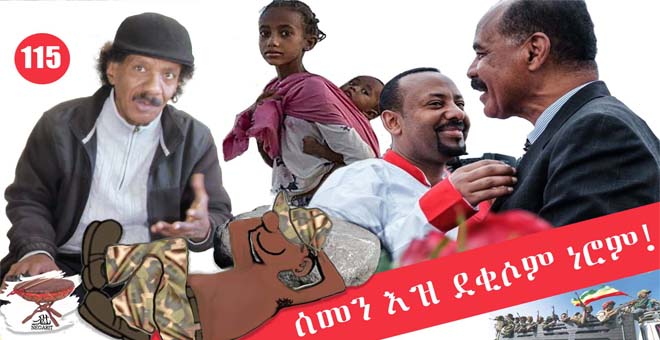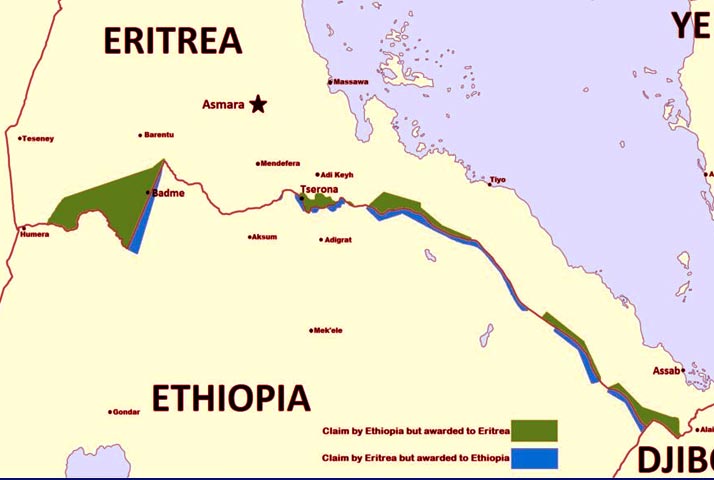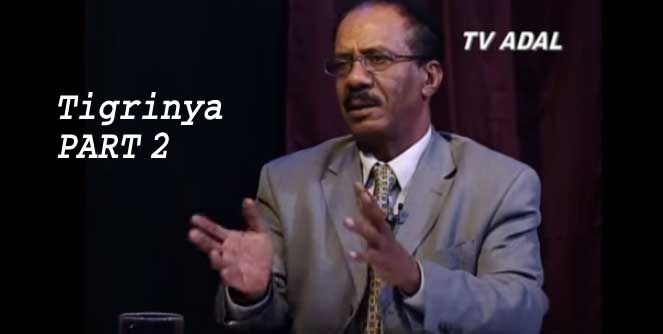Negarit 353 : Are Eritrean Youth Content?
In today’s Negarit 254, I will tell you about the late Goitom, in addition to other stories of humor and human endurance that I observed during my journey through the Eritrean Kebessa, the highlands. This segment continues the travelogue I began in Negarit 249 and carried through to Negarit 352, and it leads us to the conclusion of the mini-series in Negarit 355.
He was in a trench fighting when a snake bit his thumb. He knew the venom would spread to his body. With a shocking calmness, without hesitation, he shot his thumb, severing it. That soldier lived on—missing a thumb but earning a legend.
That soldier was Asmelash Goitom, and that strange act of self-preservation and courage would make him famous in the Eritrean struggle.
Asmelash was one of those unforgettable characters—part soldier, part legend, and part living contradiction.
Asmelash of the Snake-Bite Fame!
I first knew Asmelash Goitom as a young boy growing up in Keren. In those years, he was a member of the Ethiopian commandos—a paramilitary force formed to combat the Eritrean Liberation Front (ELF) guerrillas. The commandos were feared in every village they passed, but Asmelash was different. Even then, he was restless, questioning, and full of mischief.
In 1975, he abandoned the commandos and joined the ELF ranks, a shocking move that both sides whispered about. The story of his snakebite followed him like a shadow; it became a metaphor for his defiance, courage, and recklessness. People told it with awe and laughter in equal measure.
Asmelash passed away in Asmara on October 6, 2025, and was interned there. May he rest in peace.
Defiance in Ribda
I met Asmelash again in 1975, at Ribda training camp, where thousands of new recruits were being trained. There, he became famous for something other than the snake story. He refused to go through the standard military drills.
“I was fighting when most of you hadn’t yet heard a bullet whistle past your ears,” he argued. “I’m a soldier already, and I don’t need any of you to make me one.”
That kind of stubbornness was rare—but in Asmelash’s case, it was tolerated. The commanders, knowing his bravery and experience, decided to turn a blind eye. They assembled a new company for him, one of the first to be equipped with freshly supplied AK-47s and a brand-new Dushka heavy machine gun, among the first of its kind in the ELF.
Without delay, Asmelash and his men marched toward the Elabered garrison, launching an audacious attack that surprised everyone—including the enemy. It was reckless, yes, but effective. That was Asmelash: impulsive, brilliant, and fearless to the point of madness.
A short while later I met him again around Elaber’ed. He hadn’t changed—same broad grin, same defiant glint in his eye.
Wounded, But Still Smiling
The third time I met Asmelash was in Meqerka. He had just been released after treatment for multiple gunshot wounds. He was pale and visibly weak, but his spirit remained unbroken.
He came to meet Hamid Mahmoud, the military commander. I remember the chill in the air that day. The mountains were cold and silent except for the Tahses shrubs swaying. We were basking in the pale morning sun, talking about memories of battles while the journalists looked on when Asmelash appeared.
At that time, I had taken on the role of translator for the visiting journalists. They were bored yet curious and visibly uncomfortable in the rugged terrain. Asmelash squinted at them and asked Hamid, “Who are these white people?”
Hamid smiled and said, “They are journalists. They came to shoot battle scenes.”
Asmelash frowned, puzzled. “Then give me a squad, and I can start one for them to record?”
Hamid chuckled. “Ya, Asmelash, there will be a battle sooner or later.”
If Hamid had allowed him, Asmelash would have gone to the nearest enemy post—and started a battle. Hamid understood Asmelash’s pastime; he shook his head and sighed. “Ya Asmelash, you can’t just start a battle like that!”
But that was him—brave to a fault, spontaneous, and impossible to control– Jerom would have confirmed his bias of the ELF that he categorized as provincial.
The Human Behind the Legend
Beneath his fierce persona, Asmelash had a a fiercer persona of a medieval warrior. But he treated everyone—new recruits or veterans—with the same teasing familiarity.
He would often joke about his missing thumb, waving it like a medal. “This thumb,” he’d say, “is the price of life. The snake bit me, but I bit back.”
His story spread far beyond the camps. In the tea shops of Eritrea, in the hills and markets, people told it as if they had witnessed it themselves. Some swore he cut it off with a knife; others insisted he shot it with his pistol. It didn’t matter which version was true—what mattered was that Asmelash embodied raw courage and absurd heroism of a generation that lived and died with determination.
Gebru, Kemal, and Hiwet
A few days after I returned to Meqerka, my leg was still swollen and painful, and I had to go to the hospital (clinic). Maybe I have turned paranoid; I felt my body was poisoned. On the way I met Kemal Mohammed Ali, my old schoolmate who was also going to the clinic.
(Kemal appears in the picture that triggered this series—second from the left in white sweater.)
The trail cutting through the forest was steep, and the silence was soothing. The soft crunch of dry leaves under my shidda, the plastic sandals, and the occasional bird call echoing through the hills. We reached the ELF field clinic deep in the ravines around Liban Hebela. I met the late Gebru, head of the clinic, and Hiwet Fitwi, my old schoolmate. She was no more a barefoot doctor but a qualified certified nurse and lives in London.
The clinic was close to Dembe Metari, which was the first I saw in Kebessa when I passed it carrying a letter from Melake Tekhle; the farmers there made feta cheese themselves—I thought it was only sold at the Alimentaria Santini in Keren!
Like all clinics, the fighters joked about bullets and pain, teased the medics, and sang patriotic songs. Despite everything, they were full of life. I learned that courage, in war, often comes wrapped in laughter.
My recollection of those years is like an open wound that is festering because of our post-independence tragedies. Maybe I have grown sentimental, or maybe nostalgia has taken over.
Epilogue
Fighters like Asmelash Goitom lived fiercely and died quietly. Their stories blur the line between fact and myth, between tragedy and comedy. They were warriors, poets, and fools all at once—and in their contradictions, they carried the essence of Eritrea’s long and painful road to freedom, which, after 34 years, has remained a half-fulfilled quest.
The snake bite that took Asmelash’s thumb did not cripple him—it crowned him. It made him a legend of the hills, a man who refused to be ordinary.
Life is a battle worth fighting every day, armed or unarmed, prepared or unprepared, if you have to. But it is better to choose and fight your own battles, not others’.
The generations of the 1960s through the 1980s were driven by the wish that future generations would live peacefully and freely. But is today’s young generation peaceful and free? Certainly not in some countries, including Eritrea. And that is the biggest disappointment.





Awate Forum